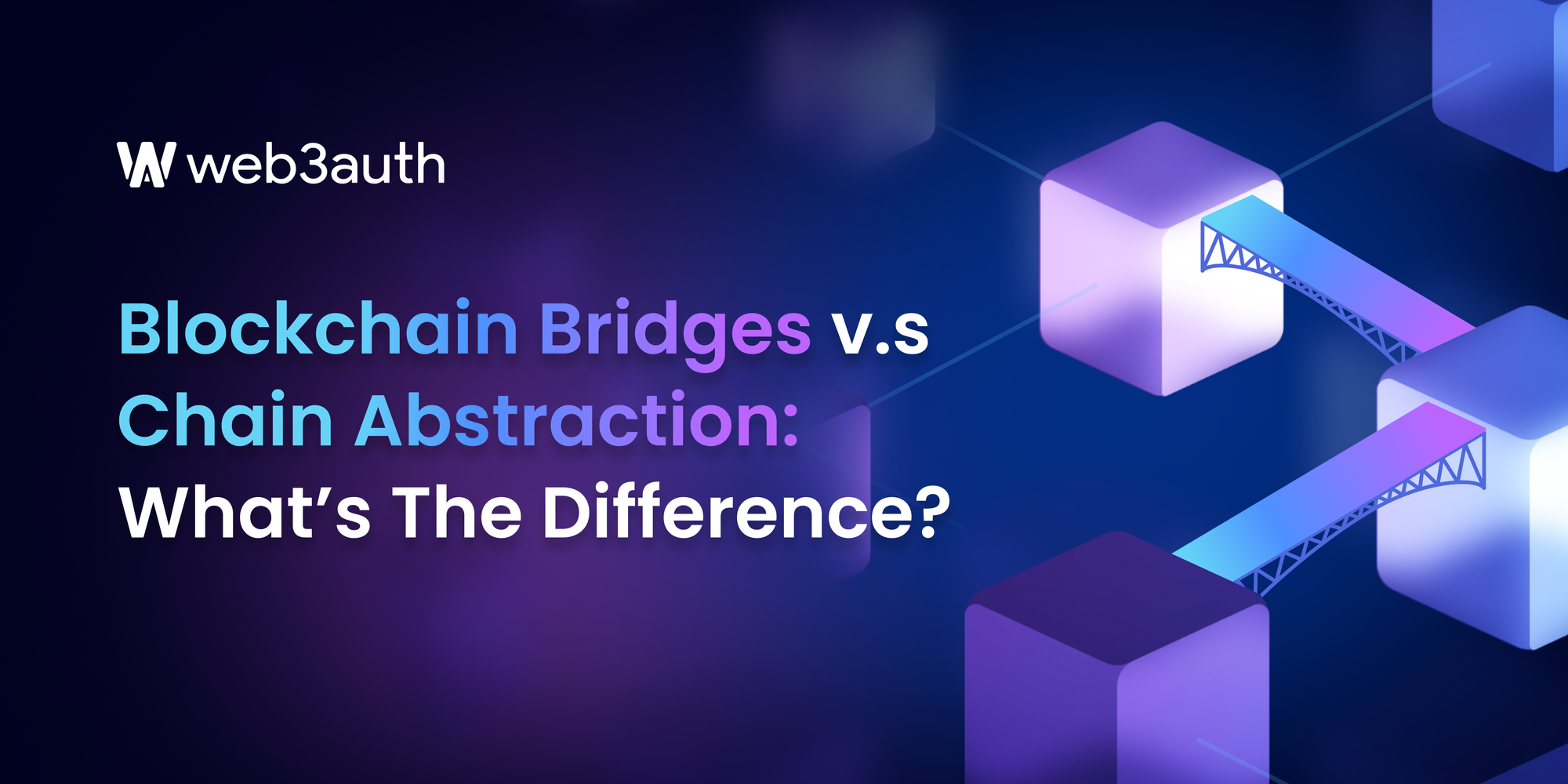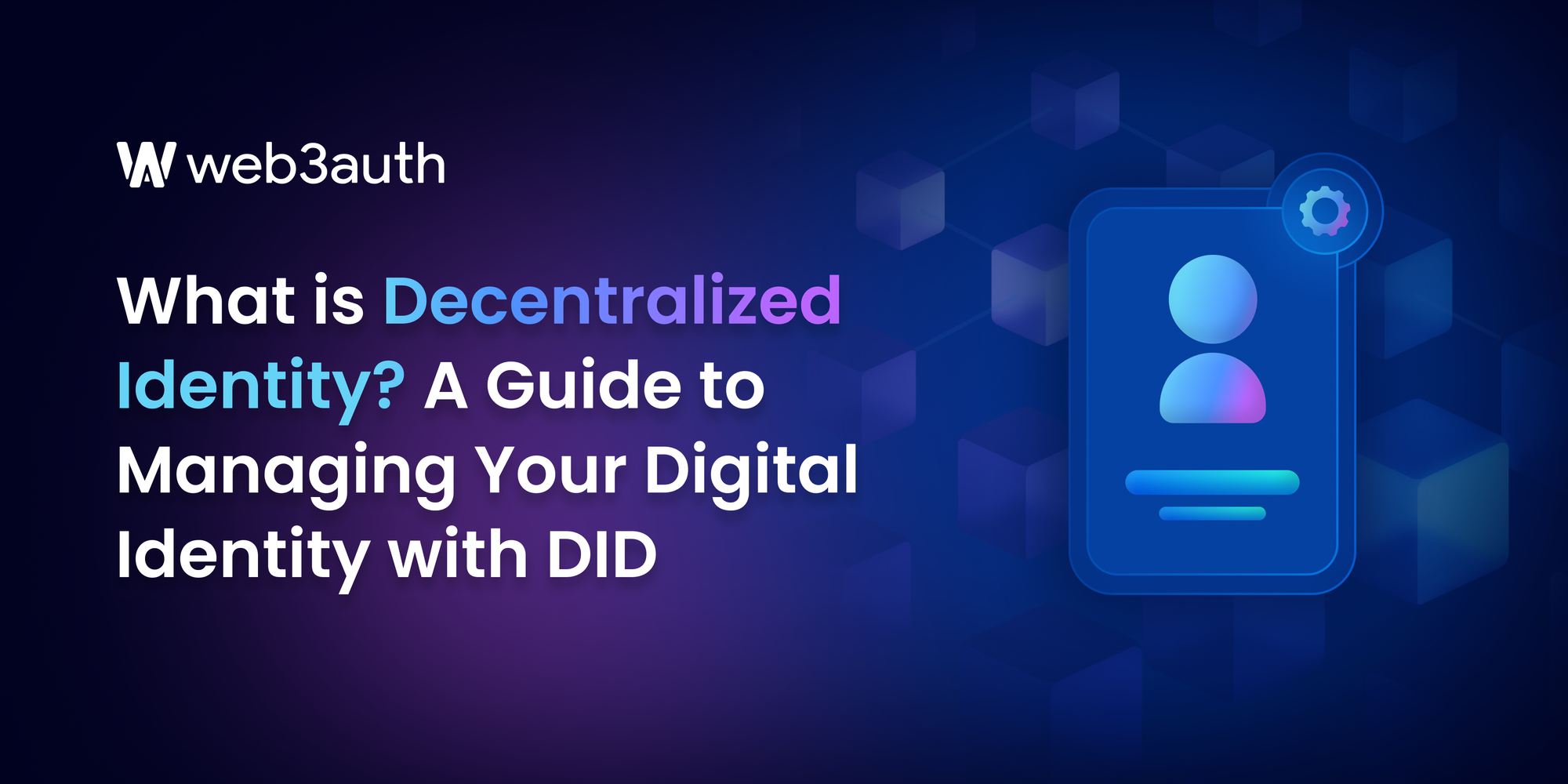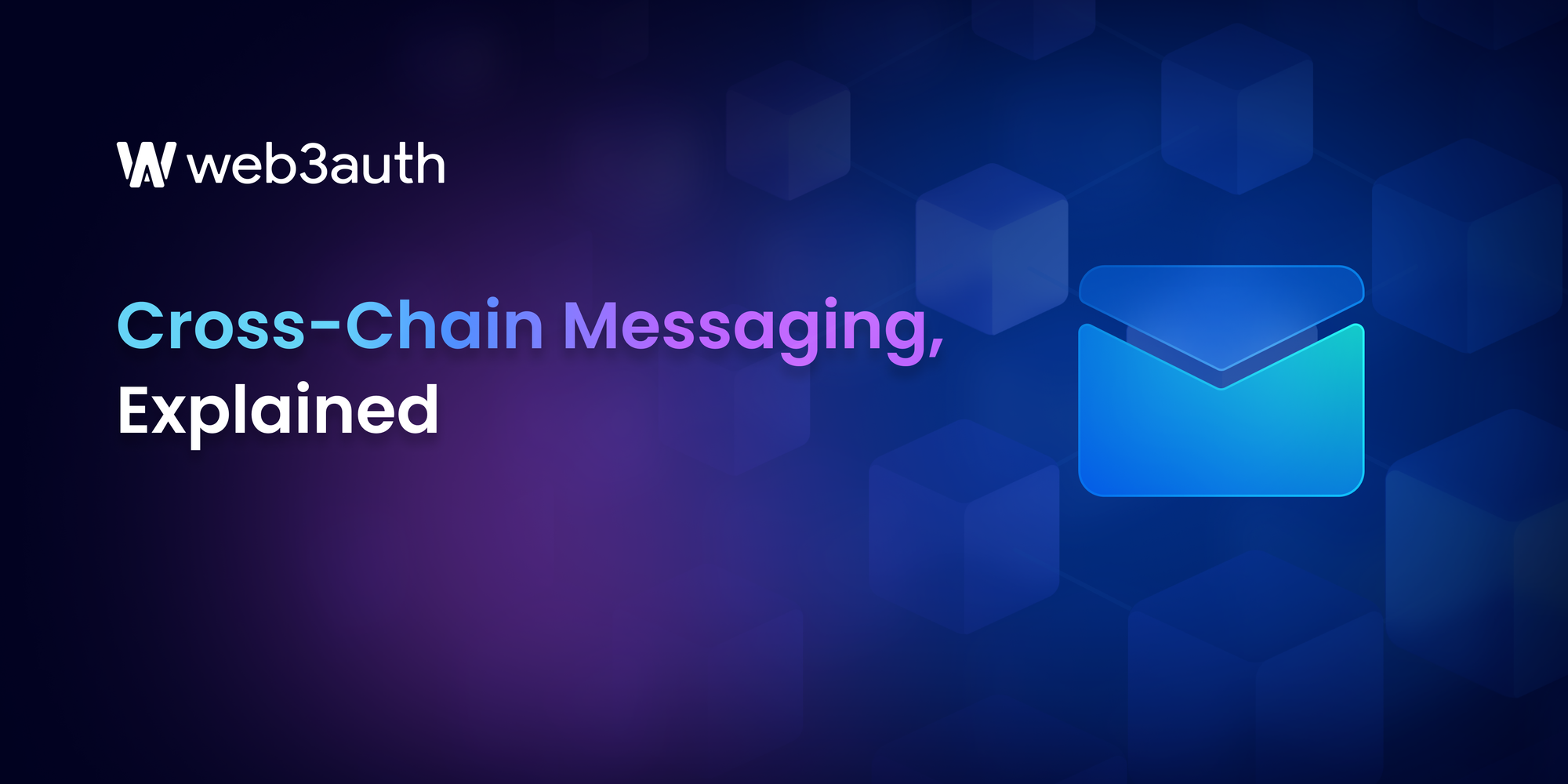On this page
The early days of blockchains saw each network operating in isolation: Bitcoin, Ethereum, and various other chains were siloed environments with limited interactions. Even as the blockchain ecosystem expanded – to over 1,000, there was no meaningful way for blockchains to interact – until recently.
Enter blockchain bridges and chain abstraction, two advancements enabling seamless connections between once-isolated chains, paving the way for a more connected and functional decentralized ecosystem.
Understanding Blockchain Bridges: Connecting Isolated Chains
Blockchain bridges are protocols that allow different blockchain networks to communicate and transfer assets or data. Without a bridge, moving assets like Bitcoin to Ethereum required using centralized exchanges. Bridges eliminate this dependency by allowing direct transfers, enhancing decentralization and user autonomy.
How Blockchain Bridges Work
According to DefiLlama, the TVL (Total Volume Locked) for blockchain bridges increased from approximately 11 billion USD in October 2023 to more than 27 billion USD in 2024, which goes to show the growing demand for bridges.
Bridges work by locking assets on one chain and issuing wrapped tokens on the destination chain. For example, with Wormhole, assets are locked in one chain, and corresponding wrapped tokens are created on another. This process allows users to leverage the benefits of multiple blockchains without leaving the decentralized environment.
There are several types of blockchain bridges, including:
- Unidirectional Bridges: These allow assets to move in only one direction between chains. For example, a bridge might let users move tokens from Ethereum to Binance Smart Chain but not the other way around.
- Bidirectional Bridges: These enable two-way asset transfers, offering more flexibility and use cases. They are essential for networks that aim to maintain a strong connection between each other, like Ethereum and Polkadot.
Several prominent blockchain bridges include:
Bidirectional Bridges
- Wormhole (Ethereum <> Solana, Binance Smart Chain, and others): Wormhole supports multiple blockchain networks and allows for bidirectional transfers of assets between supported chains. It's widely used for cross-chain DeFi and NFT transfers, particularly between Ethereum and Solana..
- Polygon Bridge (Ethereum <> Polygon): Polygon’s bridge enables seamless transfers of ERC-20 tokens and NFTs between Ethereum and the Polygon network. The bridge facilitates two-way transfers, allowing users to move assets between Ethereum and Polygon as needed..
- Avalanche Bridge (Ethereum <> Avalanche): This bridge allows users to transfer assets between Ethereum and Avalanche, facilitating the exchange of tokens and assets across both platforms. It is widely used for moving liquidity into Avalanche's DeFi ecosystem.
Unidirectional Bridges
- Wrapped Bitcoin (WBTC) (Bitcoin -> Ethereum): Wrapped Bitcoin is a unidirectional bridge that tokenizes Bitcoin for use on Ethereum. Users can lock BTC in a custody solution to receive an equivalent amount of WBTC on Ethereum, but they can only redeem BTC by reversing the wrapping process via custodial services.
- xDai Bridge (Gnosis Bridge) (Ethereum -> xDai): This bridge allows users to transfer DAI from Ethereum to the xDai chain, where it becomes xDai, a stablecoin pegged to USD. The bridge supports the movement of DAI to the xDai chain, but users require different mechanisms to move other tokens back..
- NEAR Rainbow Bridge (Ethereum -> NEAR): The Rainbow Bridge supports token transfers from Ethereum to NEAR, primarily facilitating asset migration into the NEAR ecosystem. Initially, transfers were mostly from Ethereum to NEAR, although updates have added more bidirectional capabilities.
The Emergence of Chain Abstraction
While blockchain bridges are vital for connecting different networks, they aren’t without complications of their own. For one, they can be complex and may require users to interact with multiple platforms. There also are security risks, as bridges are frequent targets of hacks, which have led to significant losses in the past
This is where chain abstraction comes in — a new approach to interoperability that abstracts the technical details away from the end user.
Chain abstraction aims to provide a unified interface for users, allowing them to interact with multiple blockchains without needing to understand the underlying mechanics. Instead of requiring users and developers to interact with each blockchain’s specific rules, tokens, and gas fees, chain abstraction hides these complexities and allows seamless transactions across different chains.
This enables dApps to operate fluidly across ecosystems without needing to manage separate wallets or tokens for each blockchain.and makes it easier for developers to build cross-chain applications that deliver a seamless user experience.
Here are some examples of chain abstraction in action:
1. Arcana Network
Arcana Network is a decentralized platform focused on providing secure identity, authentication, and data storage solutions for Web3 applications. It offers a chain-agnostic solution that integrates seamlessly across various blockchains, abstracting complex wallet management and authentication processes.
2. Particle Network
Particle Network is an infrastructure solution designed to simplify the development and deployment of decentralized applications (dApps) by offering authentication, storage, and wallet management services. It supports cross-chain development, making it easier for developers to build applications that can interact across multiple blockchain ecosystems
3. Socket Protocol
Socket Protocol is a cross-chain infrastructure that enables secure and seamless communication between blockchains. It allows decentralized applications to interact across different ecosystems by providing a robust protocol for transferring assets, data, and messages. The protocol focuses on creating a unified interface for developers to build cross-chain dApps.
4. XION
Xion is a blockchain project focused on providing a decentralized payment and e-commerce solution. It offers merchants an easy way to integrate cryptocurrency payments into their existing platforms through plugins and APIs.
5. LayerZero
LayerZero is a cross-chain messaging protocol that abstracts the complexities of interacting with multiple blockchains. It allows dApps to communicate and move data between different blockchains without developers needing to handle the specifics of each chain.
6. Polkadot
Polkadot offers chain abstraction through its Relay Chain, which connects different blockchains (parachains) and allows them to communicate seamlessly. Developers can build dApps that interact with any parachain without needing to understand the intricacies of each chain’s architecture.
What Does Chain Abstraction Have to Do with Blockchain Bridges?
A good way to think about the relationship between chain abstraction and blockchain bridges is comparing them to airports and flights.
Blockchain bridges are like direct flights between two cities (blockchains). Each flight (bridge) connects two specific cities (blockchains) and allows passengers (assets) to travel directly between them. However, each flight has its own set of rules, schedules, and requirements, and passengers must navigate the specific systems of each city and airport they enter or exit.
Chain abstraction, on the other hand, is like having a global travel agency platform that seamlessly organizes and simplifies all your travel (blockchain interactions). Instead of focusing on individual flights (bridges), it abstracts the complexities by offering a unified booking system where the details of how you get from one place to another are handled in the background. You don't need to know the specifics of each flight (bridge) or airport (blockchain) — the platform takes care of routing, connecting flights, and logistics, making your journey smooth and effortless.









